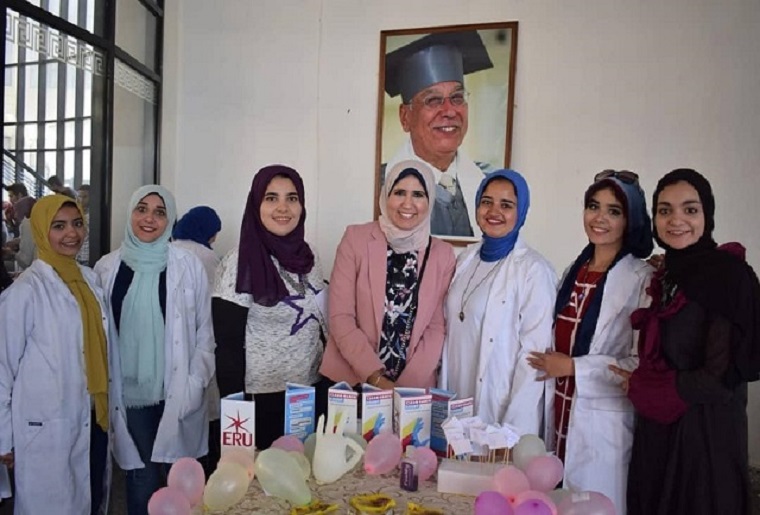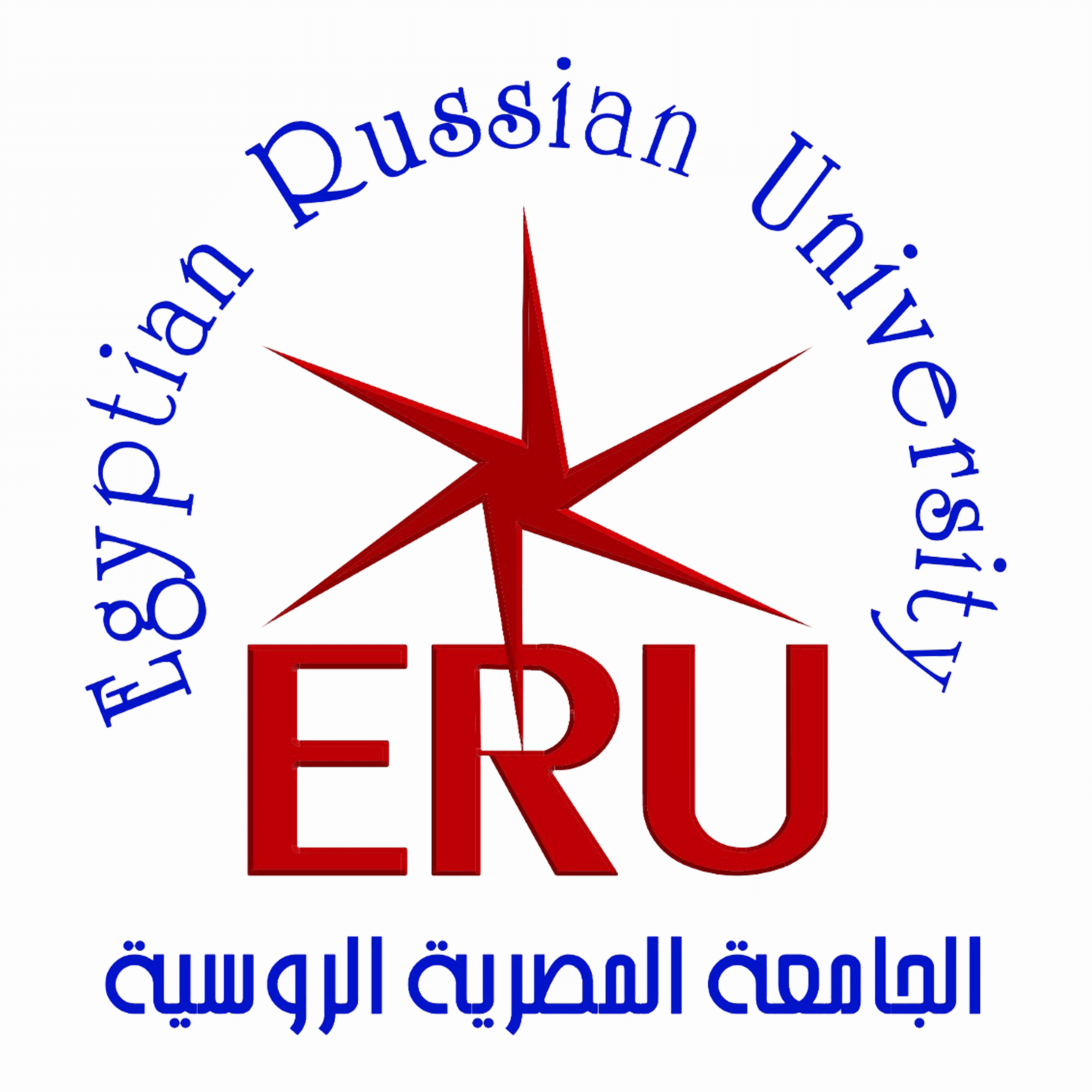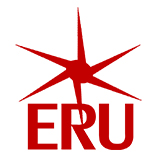
Having proven that it is less expensive A researcher at The Faculty of pharmacy, The Egyptian Russian University performed a comparison for the best HCV treatment.
Dr. Radwa Samir Mohamed Hagag, a lecturer in the Department of clinical Pharmacy and pharmacy Practice, Faculty of Pharmacy, Egyptian Russian University, presented a new study to compare the efficacy and safety of certain antivirals in the Egyptian market on Egyptian hepatitis C patients. The study concluded that patients have multiple genotypes for the same gene. Significant lower viremia, fibrosis index are detected after treatment. Regimen with lower cost is determined.
In the same context, Prof. Dr. Ehab Mohamed Fattouh, Dean of the Faculty of Pharmacy, indicated that the Faculty of Pharmacy at the Egyptian Russian University provides the appropriate atmosphere for researchers from faculty members and the supporting staff to conduct their experiments and scientific research. The university administration also urges researchers to choose research points that serve citizens and find solutions to some societal problems, in line with the university’s research plan, the national trend of applied research in the field of community service, and Egypt’s national plan for sustainable development 2030.
Dr. Radwa Samir Mohamed Hagag stated that the aim of the study was to compare the two HCV treatment regimens in the Egyptian market: the first regimen consisted of two drugs “sofosbuvir and daclatasvir”, while the second regimen consisted of “ompitasvir, paritaprevir, ritonavir, and ribavirin”. The study aimed to compare safety, efficacy and cost of the two treatment regimens, in addition to determining the most cost saving regimen and determining the impact of IL28B genotypes on the efficacy and safety of the two treatment regimens used in this study.
The lecturer at the Department of Clinical Pharmacy and pharmacy Practice department, Faculty of Pharmacy at the Egyptian Russian University, confirmed that initially all hepatitis C patients, who applied to the Ain Shams Research Institute, were evaluated; to make sure of their eligibility for the study, and all patients were asked for their inclusion in the study. Patients were asked about any previous treatment history for hepatitis C virus. At baseline all patients performed fibroscan for measurement of the percentage of liver cirrhosis. Moreover, all patients underwent laboratory analysis for complete blood picture, liver enzymes, kidney functions, and viral load in the blood.
Dr. Radwa Hagag explained that the patients were divided into two treatment groups. The first group received “sofosbuvir and daclatasvir”, and the second group received “ombitasvir, paritaprevir, ritonavir, and ribavirin”. The results of the research showed that genotype IL28B CT represented 52.43% of patients; While the genotypes “CC and TT” represented 28.15% and 19.42% of patients, respectively. The second treatment group showed an association of genotypes with “AST/ALT ratio” at the end of the treatment period.
The lecturer at clinical pharmacy department at the College of Pharmacy pointed out that at the end of the treatment period, all patients in the two groups showed negative blood results for viral load in the blood. Moreover, the fibrosis index 4 “FIB-4” and “APRI” decreased significantly after treatment in both groups in the twenty fourth week of treatment. Three cases of relapses (5.2%) appeared in the first group and two cases of relapses (4.1%) in the second group, noting that there was a significant decrease in the level of AST, ALT, hemoglobin, and fibrosis indicators “FIB-4” and “APRI” in both groups after treatment. Albumin levels also decreased in the second group only after treatment.
Dr. Radwa Hagag noted that at the end of the treatment, the levels of liver enzymes “ALT” and “AST”, and total bilirubin were statistically different between the two treatment groups. The results of a study also showed that the cost of treating one patient in the second group was higher than the cost of treating one patient in the first group, with a difference of “18,164.84 pounds”, despite the similar efficacy and safety of the two treatment regimes.
The lecturer of department of clinical pharmacy and pharmacy practice, Faculty of Pharmacy, concluded that both treatment regimens are effective and safe in the treatment of chronic hepatitis C in Egyptian patients without causing any adverse side effects. She added that in terms of cost, the treatment regimen, “sofosbuvir and daclatasvir”, was the cheapest despite the similar efficacy with the other treatment regimen.
Radwa Hagag mentioned that the study indicated that the IL28B genotypes have no predictive relationship with regard to the safety and efficacy of the two treatment regimens. Pointing out that the study recommends an evaluation of the probability cirrhosis occurrence after treatment with the fibroscan device, and it also recommends studies with a larger number of patients to determine the effect of the genotypes of “IL28B”, in a more accurate way, on the efficacy and safety of the treatment regimens used, in addition, it is recommended to conduct an evaluation of ” IL28B rs 8099917″ that has been demonstrated as a predictor of the efficacy of previously used IFN regimens.
The lecturer at the department of clinical pharmacy and pharmacy practice at the faculty of pharmacy added that it is recommended to conduct studies showing the extent to which the genotypes of IL28B are associated with the efficacy and safety of drugs in other groups of hepatitis C patients, such as patients with liver cirrhosis and patients with kidney failure.
It is worth noting that the results of this study were published in a research paper entitled “Safety, efficacy and cost of two direct-acting antivirals: a comparative study in chronic hepatitis C in Egyptian patients”, and it was published in the journal “J Clin Pharm Ther”. Specialist in clinical pharmacology. Another research paper entitled “Effect of IL28B gene polymorphism on the efficacy and safety of Direct-acting antiviral drugs” was also published.
Having proven that it is less expensive A researcher at The Faculty of pharmacy, The Egyptian Russian University performed a comparison for the best HCV treatment.
Dr. Radwa Samir Mohamed Hagag, a lecturer in the Department of clinical Pharmacy and pharmacy Practice, Faculty of Pharmacy, Egyptian Russian University, presented a new study to compare the efficacy and safety of certain antivirals in the Egyptian market on Egyptian hepatitis C patients. The study concluded that patients have multiple genotypes for the same gene. Significant lower viremia, fibrosis index are detected after treatment. Regimen with lower cost is determined.







 Total Users : 336767
Total Users : 336767 Total views : 708447
Total views : 708447 Who's Online : 0
Who's Online : 0 Your IP Address : 3.147.42.197
Your IP Address : 3.147.42.197